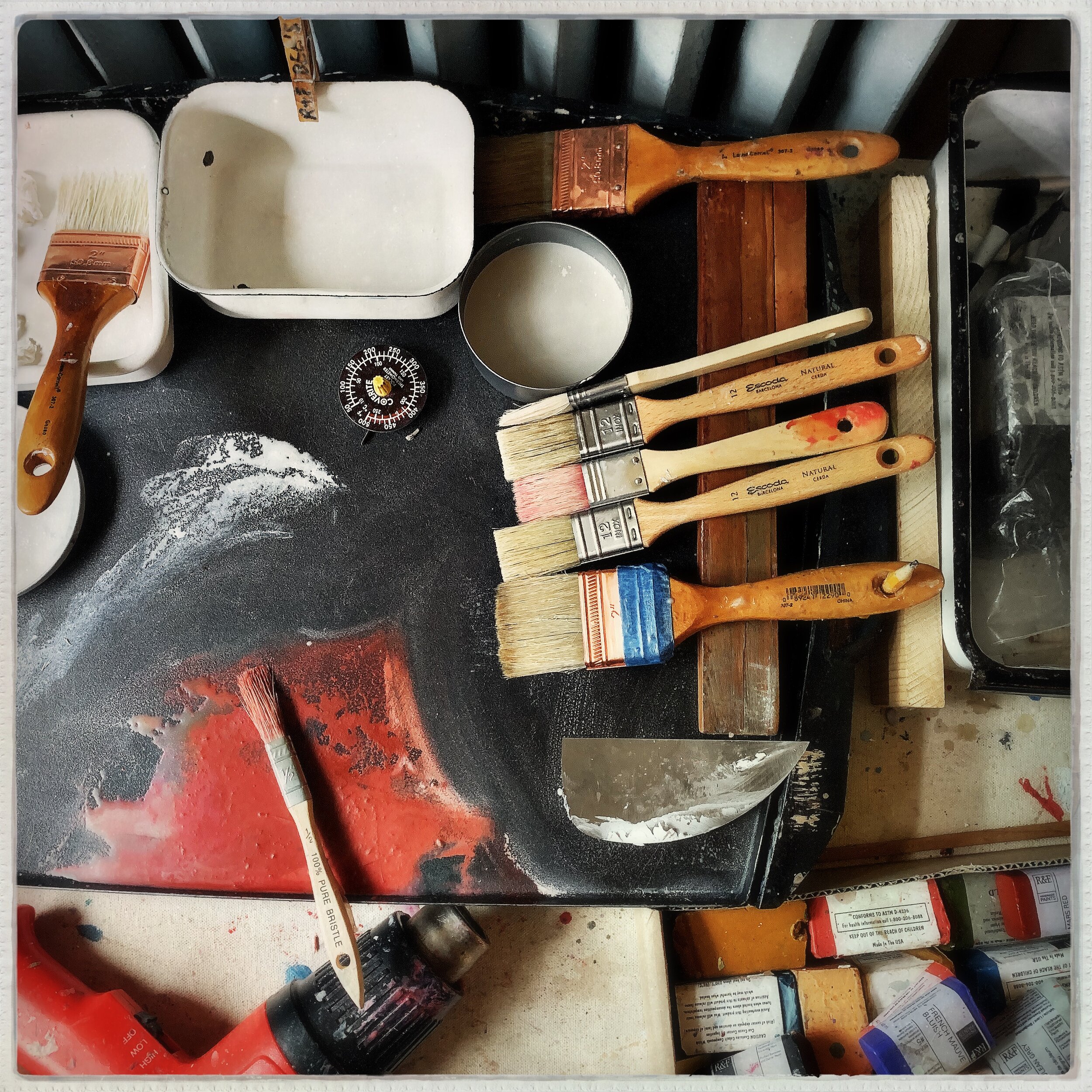
Process
What is Encaustic?
Encaustic is a hot wax medium made of beeswax and damar resin. Other types of waxes, oils, and pigments are sometimes added to the medium, depending on the artist’s preference.
The word encaustic comes from the Greek work enkaustikos, meaning “to burn”. The oldest surviving encaustic paintings date back to Egypt, 100-300AD. More commonly, encaustic painting is found in Ancient Greek, Roman, and Byzantine art. 20th Century artists, such as Jasper Johns, Diego Rivera, and James Ensor, also experimented with encaustic. More recently, encaustic paint has become popular with contemporary artists and craftsman all over the world.
Working with encaustic involves heating the wax medium on a heated surface such as a hot plate or common kitchen griddle. Once the medium is sufficiently heated to a liquid viscosity it can then be applied to a hard surface and manipulated with brushes or other tools. Once applied, the encaustic paint must then be gently re-heated with a heat gun or flame in order to ensure that it is permanently fused to the surface. Encaustic can be layered and manipulated to create intricate and varied textures and is often used as a surface treatment on materials such as wood, ceramic, and metal, or as a sculptural material on its own. Because of the visceral nature of encaustic it is common for the work to exhibit nonuniform textures and surface irregularities. This is part of its allure and what makes it distinctive from other paint mediums.
How to care for an encaustic collage
Encaustic artworks are extremely archival and with proper care should last a lifetime. However, because of the inherent nature of wax to melt and cool in certain conditions, care should be taken not to display the work where it might be exposed to extreme temperatures - such as in a kitchen, near a heater or radiator, or in direct sunlight. The works are also sensitive to very cold or constantly changing temperatures which can cause the medium to expand, contract, and crack. Encaustic is a living, organic medium and it can take 1 to 3 years for an encaustic work to permanently cure and harden. Should a work exhibit signs of “bloom” or cloudiness, gently rubbing the surface with a soft cloth or nylon stocking will bring back its seductive luster.